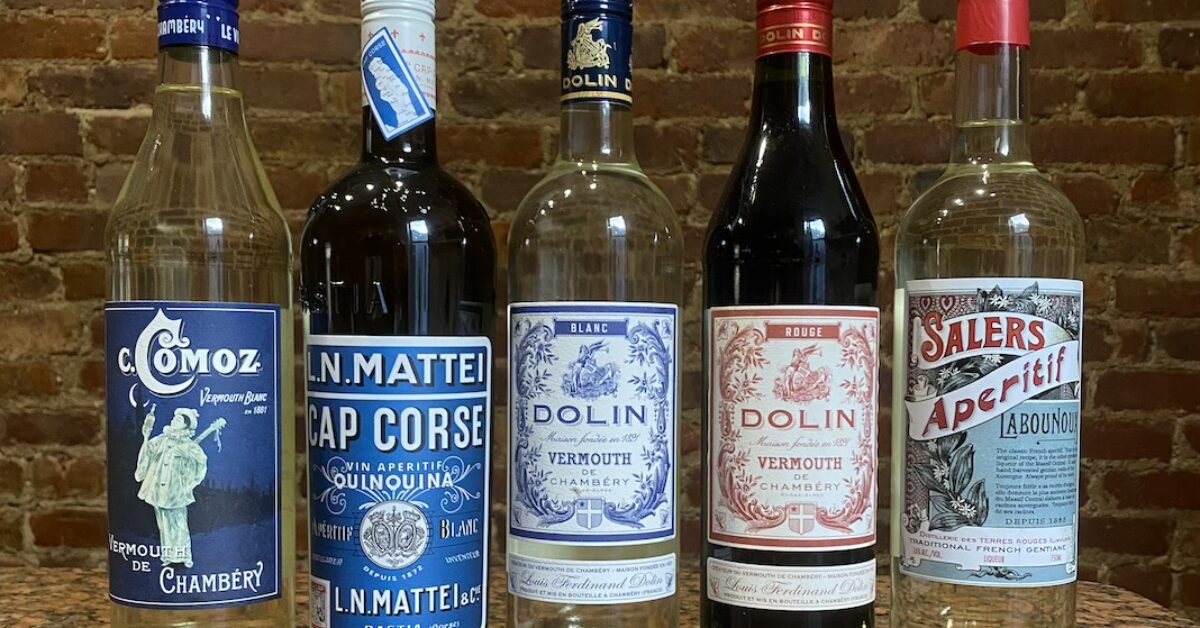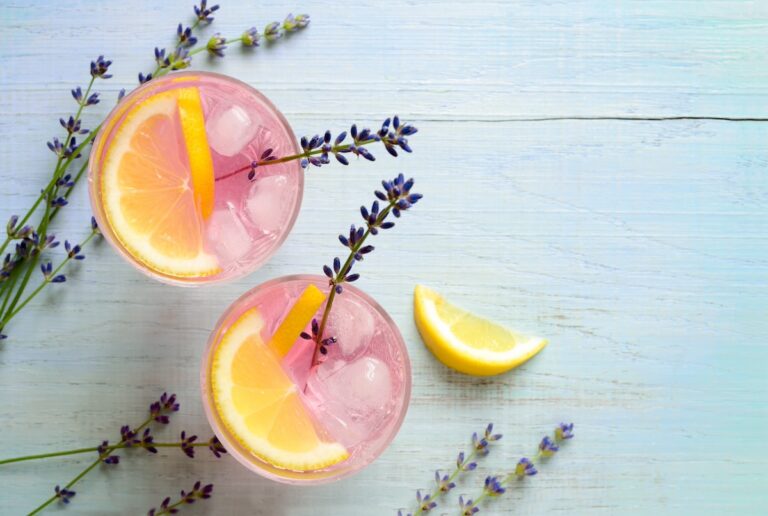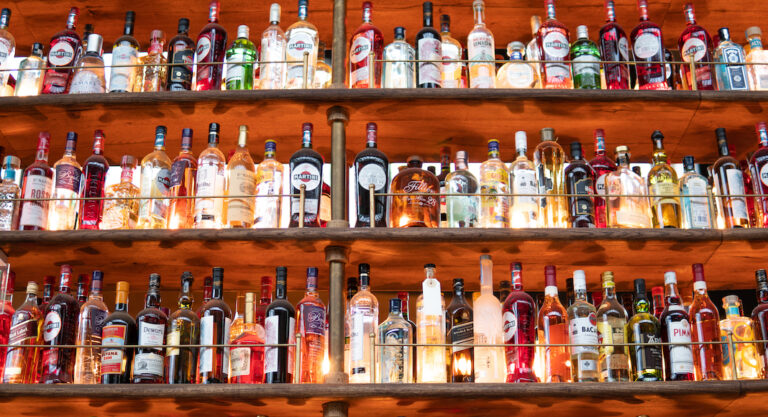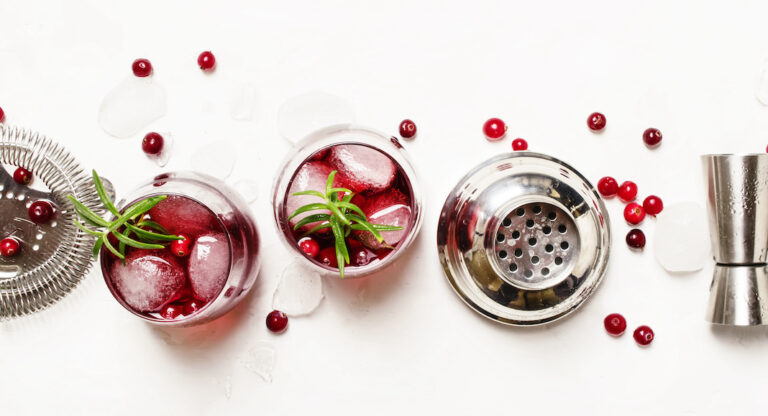L’Apéro, the French pre-dinner snack-and-chat (something akin to happy hour in the U.S.), is a custom with its own cult following. Whole books are written on the subject, from David Lebovitz’s Drinking French to Rebekah Peppler’s Apéritif. But the idea of enjoying a leisurely beverage at l’heure bleue gets its name from a specific branch of beverage, the apéritif, designed to open the appetite and prepare you for the meal to come. This category includes fortified aromatized wines like vermouth, quinquinas (also known as kinas or chinas), and gentian liqueurs, beloved by Europeans but little-understood by Americans outside of the espresso martini set. David Phillips, from the beverage importer Haus Alpenz, recently stepped in to help us illuminate this treasure trove of appetizing French bar staples.
What is an apéritif?
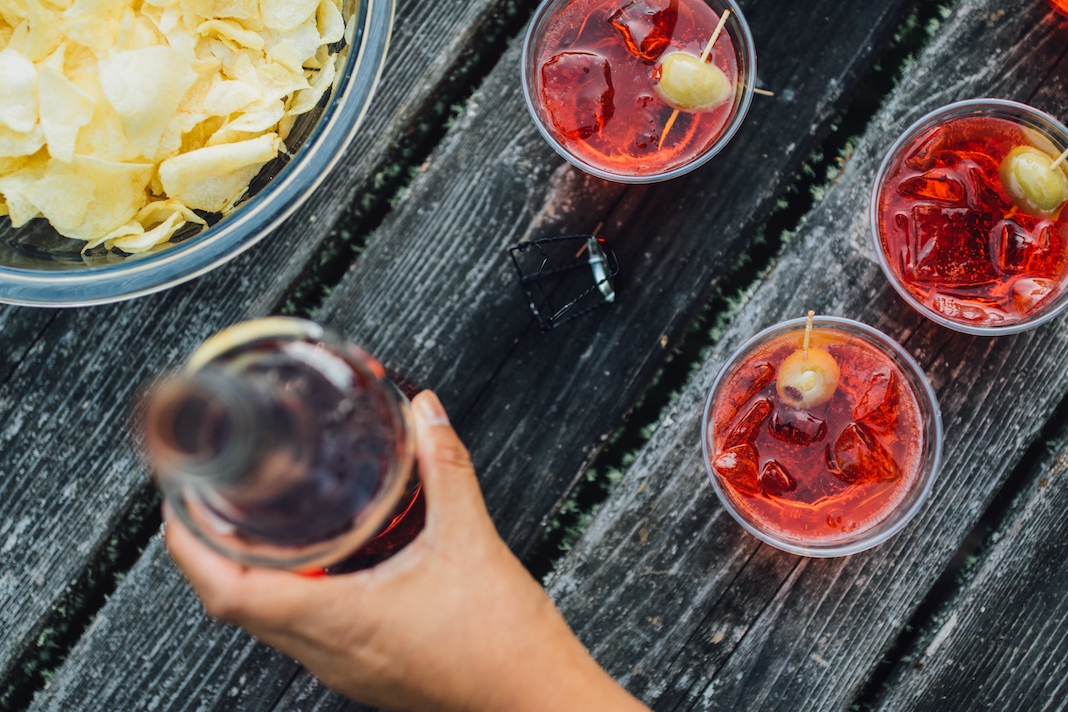
Apéritifs, or aperitivos, are a class of beverages produced mainly in France and Italy and served before a meal. They have a low ABV, around 17%, making them fantastic for lightweight cocktails. (This also means they need to be refrigerated after opening.) Lastly, they are generally flavored with at least one of the big three botanicals: wormwood, quinine, and gentian. Complex and bitter, all with certain alleged medicinal properties, they are found in nature as an herb (wormwood), the bark of a tree (quinine), and the root of a plant (gentian). “When you come down to it, the big question is why are these the big three? Well, they are three different types of bitterness,” Phillips explains. “The wormwood attacks more the front of the palate, the gentian is more middle of the palate, and the quinine is more in the back of the palate.”
Some of these botanicals are also used in after-dinner beverages, known as digestifs or digestivos. “People always ask me, ‘What’s the difference between apéritifs and digestifs?’ And I say, ‘Very little.’ They’re very similar. Apéritifs are bitter, but not as bitter as digestifs. And the bitterness in apéritifs is accented by more citrusy things that uplift it, whereas digestifs are more herbal in nature. Think of Fernet Branca or any of the major Italian amaros… it’s dark and deep and herbal. I think that’s what perks up the appetite versus closes down the appetite.”
Vermouth

Vermouth is a fortified aromatized wine primarily flavored with wormwood. (Vermouth comes from the German word for wormwood, Wermut.) With fortified wines, like port or sherry, neutral spirits are added during the fermentation process to raise the alcohol level to about 17%, killing off the yeast in a process known as mutage. Because the yeast is killed before it can consume all of the sugar in the wine, fortified wines are often sweet. The difference with aromatized wines is that both the wine and the neutral spirits are infused with botanicals before they are brought together.
“There’re a thousand years of history of people putting wormwood in wine. But when you talk about the commercialization of bottling and selling it, you basically have Italian and French. Italian vermouth was sweet and red, and French vermouth was dry and white…. After World War II, everyone industrialized and started making both kinds,” Phillips explains.
While most people would be familiar with sweet red vermouth (Italian) and dry vermouth (French), blanc or bianco vermouth is often overlooked. It became popularized after World War II in Europe by Martini & Rossi, and it’s still common to find old French men ordering a “martini,” i.e., a glass of sweet white vermouth on the rocks with a splash of soda water and a twist of lemon.
Dolin and Comoz were the ones to specialize in sweet white vermouth, which became popular in the cocktail El Presidente or drunk on the rocks. Meanwhile the cocktail industry in the States turned towards sweet red vermouth for a surprising reason: Red vermouth isn’t quite red, since its color comes not from red grapes, but from botanicals and caramelized sugar. “As cocktails started to shake out, you had dry vermouth going in with gin, and that looked cool, clear with clear. That’s why the martini glass literally was created, to show off that perfectly clear, beautiful cocktail.” Phillips postulates that sweet red vermouth was darkened with caramelized sugar to pair better aesthetically with whiskey, as in a Manhattan.
Quinquinas

Quinas are made similarly to vermouth, except with the primary botanical of quinine. (Though they may also include wormwood, gentian, or other botanicals.) Quinine, which comes from the bark of the cinchona tree and gives tonic water its signature flavor, is so bitter that only a very small amount is needed to flavor a quina, which is why quinas are often clear despite the dark color of the botanical itself. “Quinas tend to be particularly French. We have Mattei Cap Corse, Byrrh, Bonal. All of those are very French.” Mattei Cap Corse Blanc and Cap Corse Rouge both use white wine grapes, but the different botanicals lend them different colors: cédrat for Blanc, cacao and walnut for Rouge. Some quinas, like Cap Corse, are made with mistelle, or fortified grape juice, in lieu of fortified wine. Some, like Byrrh, even contain a combination of mistelle and fortified wine.
As with vermouth, red quinas are rarely made with red grapes, colored instead by caramelized sugar, which gives them the ideal mouthfeel for use in cocktails.
Gentian & Americanos

Popular gentian liqueurs, like Suze, Salers, and Aveze, are made with a bitter root that takes years to grow, and a lot of effort to painstakingly unearth. The flavor can only be explained by saying that it sort of tastes like dirt… in a good way. “It’s kind of green and a little earthy, and maybe even sour and briny, and that’s kind of what gentian smells like.”
So how does this intense bitterness find its balance? “You don’t really want to drink Salers on its own, it’s pretty bitter and earthy and weird. But if you mix it with a little soda, a little lemon, it kind of has this uplifting basenote to it.”
Unlike vermouth and quinas, gentian liqueurs like Salers aren’t aromatized wines, but are, instead, spirit-based, putting them in the vicinity of the occasionally confusing category of americanos. Despite the name, these drinks have nothing to do with the good ol’ U.S. of A., instead borrowing from the root word amer, or bitter.
When it comes to apéritif wines, there is vermouth, which has wormwood to give it bitterness; quinas, which have quinine to give them bitterness; and americanos, which have gentian to give them bitterness. Some Italian red bitters, like Cappelletti, are wine based, qualifying them as americanos. But other red bitters, like Campari and Aperol, are spirit-based, setting them apart from americanos despite their common botanicals. The French equivalent of red Italian bitters are the gentian liqueurs: Salers, Suze, and Aveze.
If you haven’t heard of gentian, there’s a reason. “As the cocktail world took off, that industry was basically dying. There was probably not a lot of call for gentian. And now with these bitter amaros from Brooklyn to the revival of everything in Italy, there’s probably a whole booming market for that stuff right now.”
Are people paying attention to apéritifs more now?
“Absolutely. Take the bar Amor Y Amargo, for example. You started with this little bitters tasting room that was supposed to be a pop up with ten seats in it, to now expanding to a bigger store, a bigger bar on the corner, another location in Brooklyn, pop ups around the world, not to mention copies of it around the world. One of the bartenders who used to work at Amor Y Amargo is out in Seattle and she runs a bar called Barnacle, which is essentially the same kind of bar on the west coast. We’ve seen an uptick in this kind of stuff, I mean, we were kind of the vanguard.”
What should you eat with your apéritif?

“One of the things that the fortified, aromatized wines do really well is cheese pairings. Because people usually say, ‘Wine and cheese go great together.’ But most wine does not go with most cheese. Red wine is particularly bad with a lot of cheeses because they bring out the tannins. White wine goes particularly well with cheese, sweet white wine goes even better, or off-dry white wines, because you have salty cheese, you have slightly sweet wine, and you get the maple syrup and bacon effect. You get the sweet and the salty, and it tastes so much better when you have that. You also have higher acidity in white wines. You have lots of fat in cheese, and when you drink a glass of wine, you’re going to cleanse your palate with the acidity of the wine, getting ready for another bite of cheese… The bitterness of all these fortified, aromatized wines resets your palate, so you can taste something new if you’re going to go from one cheese to another. So I think vermouths and quinas are particularly great at cheese tastings.”
Sweet red vermouths like Dolin Rouge pair particularly well with charcuterie, perhaps a saucisson sec, or hard cheeses. A sweet white vermouth like Dolin Blanc, on the other hand, goes well with soft cheeses.
What’s the best way to use an apéritif in a cocktail?

In Europe, apéritifs are typically drunk on ice, with a splash of soda and a twist of some sort of citrus. But, “Here in America, we take products that people have been making for hundreds of years, mix them with other products people have been making for hundreds of years, and we create something new by ruining the original products. That’s the American cocktail! Mixing things together that had no intention of ever being mixed together.”
As for the European cocktail? “Every cocktail is by definition a base spirit, something sour or bitter, and something sweet. You take a look at everything here on the wall,” Phillips says, pointing to rows of apéritifs in his office, “they’re sweet and bitter at the same time. You already have a cocktail in front of you, that’s why you drink these on their own. But I say, you take any of these and mix them with a base spirit, and you have a cocktail.”
Apéritif cheat sheet
Mattei Cap Corse Quinquina Blanc
Type: Quinquina
Eat with: Sheep’s milk or goat’s milk cheese, olives, seafood salad.
Drink with: Vodka, sparkling wine, and an orange or grapefruit peel. It’s great in spritzes but can easily hold its own.
Tasting notes: Mineral, acidic, and floral, with notes of cédrat, a Corsican citrus.
Mattei Cap Corse Quinquina Rouge
Type: Quinquina
Eat with: Cured ham, mild salami, salty cheese.
Drink with: Brandies, apple brandies (like Calvados), Irish or Scotch whiskeys, and tequila.
Tasting notes: Complex and dry, made with walnuts and cinchona bark.
Bonal
Type: Gentiane-Quina
Eat with: Alpine cows-milk cheeses, jerky, salted almonds.
Drink with: Hard cider, ginger, or bubbly, with a lemon twist.
Tasting notes: Earthy and spicy, made with both gentian and quinine.
Byrrh Grand Quinquina
Type: Quinquina
Eat with: Blue cheese.
Drink with: Gin, Irish whiskey, agave spirits, and grapefruit.
Tasting notes: Port-like, with quinine.
Comoz Blanc Vermouth de Chambéry
Type: Sweet White Vermouth
Eat with: Bloomy-rind and many other cheeses, strawberries.
Drink with: Gin, vodka, tequila, rum.
Tasting notes: A drier blanc, intensified by notes of stone fruit and a pronounced wormwood character.
Dolin Blanc Vermouth de Chambéry
Type: Sweet White Vermouth
Eat with: Fresh cow’s milk cheese and fruit.
Drink with: Clear spirits like vodka or gin, either in stirred drinks, or with citrus and soda.
Tasting notes: Vanilla, with a fresh taste and balance sweetness.
Dolin Rouge Vermouth de Chambéry
Type: Sweet Red Vermouth
Eat with: Manchego, prosciutto, olives, pâtés.
Drink with: Whiskey and a twist of orange.
Tasting notes: Spicy notes with a light body and clean finish.
Dolin Dry Vermouth de Chambéry
Type: Dry Vermouth
Eat with: Delicate raw seafood, clams, lightly cured salmon, young cheeses.
Drink with: Vodka, gin, and lemon.
Tasting notes: Fresh, light, and clean.
Salers Apéritif Gentian
Type: Gentian
Drink with: Gin, sparkling wine, blanc vermouth, and lemon.
Eat with: Raspberries.
Tasting notes: Earthy and deeply bitter, with a “candied topsoil” effect.
—
Catherine Rickman is a writer, professional francophile, and host of the Expat Horror Stories podcast. She is currently somewhere in Brooklyn with a fork in one hand and a pen in the other, and you can follow her adventures on Instagram @catrickman.

